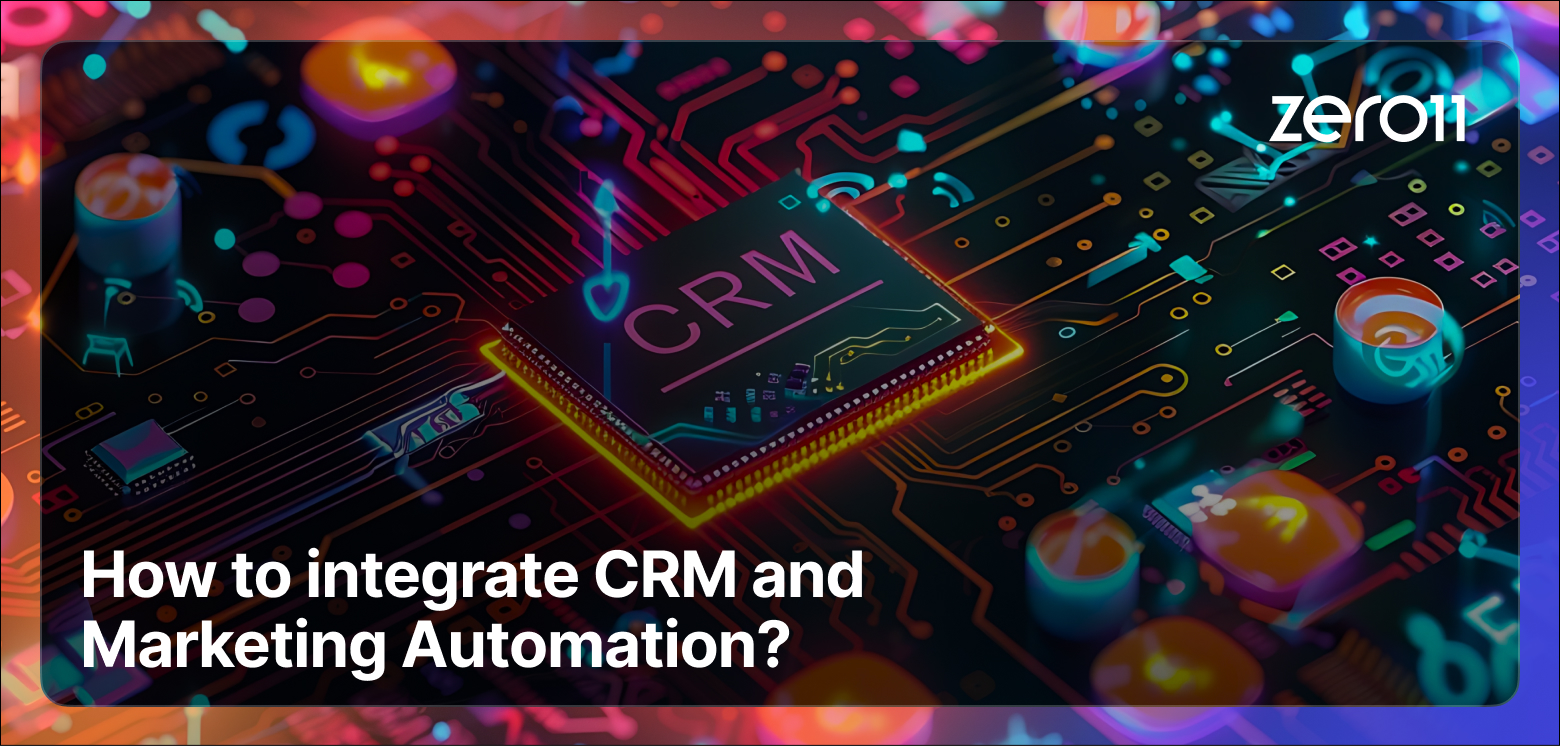Index
Other categories
18 February 2025
CRM and Marketing Automation: the Essential Integration for 2025

In the constantly evolving digital landscape, companies are constantly seeking ways to optimize operations, improve efficiency, and offer increasingly personalized customer experiences.
To remain competitive in 2025 and beyond, the integration between Customer Relationship Management (CRM) and Marketing Automation tools is no longer an option, but a necessity.
What is a CRM and why is it essential?
A CRM (Customer Relationship Manager) is a platform that allows companies to centralize customer information management, track interactions, and optimize sales strategies.
The main features of a CRM include:
- Centralized customer data storage: Contacts, emails, phone numbers, reference company, and demographic information.
- Tracking customer interactions: History of emails, calls, engagement with marketing campaigns.
- Lead management and sales cycle tracking: Detecting lead status and managing business opportunities.
- Advanced reporting and sales analytics: Monitoring sales performance, conversions from MQL (Marketing Qualified Lead) to SQL (Sales Qualified Lead), and much more.
Market-leading CRM platforms include Salesforce, HubSpot CRM, Zoho CRM, SAP, and Microsoft Dynamics. While some CRMs offer marketing automation features, their primary function remains data and sales process management.
What is Marketing Automation?
Marketing Automation tools enable companies to automate repetitive tasks related to managing marketing campaigns, improving efficiency and personalization of communications.
The main features of Marketing Automation include:
- Automated lead nurturing: Email marketing, SMS, abandoned cart follow-ups.
- Campaign performance analysis: Monitoring key metrics and A/B testing.
- Audience management and data segmentation: Integration with advertising platforms for targeted communication.
- Lead scoring: Identifying and classifying leads based on behavior and engagement.
Tools such as HubSpot, Marketo, Pardot, Mailchimp, and Klaviyo offer advanced marketing automation features for businesses of all sizes.
Why integrate CRM and Marketing Automation?
Integrating CRM and Marketing Automation allows for a smoother and more effective workflow, enhancing personalization and coordination between marketing and sales.
The main benefits of integration include:
- Hyper-personalized experiences: Combining CRM and marketing automation data enables sending targeted and timely messages.
- Alignment between marketing and sales: Data collected from advertising campaigns is automatically transferred to the CRM, facilitating the sales team's work.
- Omnichannel: Email, chatbot, social media, and phone interactions are centralized, offering a consistent and uninterrupted customer experience.
- Improved customer service: Operators have access to all relevant information in real time, allowing for more effective and personalized responses.
The challenges of integration
Although the benefits are evident, integrating CRM and Marketing Automation can present some challenges:
- Data accuracy: Errors, duplications, and outdated data can undermine the effectiveness of the integration.
- Non-native integration: Some tools lack predefined integrations and require custom solutions or third-party tools.
- Regular updates: The integration must be constantly monitored and updated to ensure data accuracy.
- Real-time data flow: If systems do not update in real time, customers may receive outdated messages.
How to integrate CRM and Marketing Automation?
There are three main methods of integration:
- Native integration: Some CRMs and Marketing Automation tools offer direct pre-configured integrations. For example, Salesforce has over 5,000 integrations in its marketplace, HubSpot CRM has over 1,000, and Zoho CRM has 900.
- Third-party tools: Solutions like Zapier allow for creating custom workflows between different applications without the need for coding.
- Custom APIs: If no native integrations or compatible third-party tools are available, it is possible to develop a custom API to connect the systems.
Key steps for perfect integration:
- Define objectives: Clarify the purpose of the integration and the value it will bring to the business.
- Check compatibility: Verify which solutions are already available for your technological infrastructure.
- Create workflows: Define data mapping processes between the two systems.
- Data cleaning: Remove duplications and errors in databases to ensure accurate integration.
- Testing and ongoing maintenance: Monitor and update the integration to optimize its effectiveness.
The future of CRM and Marketing Automation integration
Integrating CRM and Marketing Automation means building a digital ecosystem where data, strategies, and customer experience work in perfect synergy. This integration not only increases operational efficiency but also creates more engaging and personalized customer experiences.
Companies that do not adopt this strategy risk falling behind in an increasingly competitive market. For this reason, Zero11 offers advanced Martech solutions based on AIAbility, combining the best of AI with automation tools to improve customer management and optimize marketing strategies.
Want to discover how Zero11 can support you in CRM and Marketing Automation integration? Contact us today for a personalized consultation!
Contact us
Want to discover how Zero11 can support you in CRM and Marketing Automation integration? Contact us today for a personalized consultation!

